Write: Monica Uriel. Journalist
With a long history behind it, as evidenced by the rock-hewn churches of Lalibela, and a promising future.
Ethiopia is a paradise for lovers of good coffee. It houses the closest thing to hell on earth in the Danakil Desert. Its fertile land offers a unique cereal such as the caloric teff, the basis of its popular food, it injects it. Here it is said that this bread that is made like a crêp is responsible for the triumphs of its athletes.
This eminently agricultural country leaves beautiful green and yellow landscapes imprinted in the memory of the visitor. In the heart, the hospitality of the Ethiopians and their face of surprise, many times, when having white people in front of them.
Elaboration of the Injera
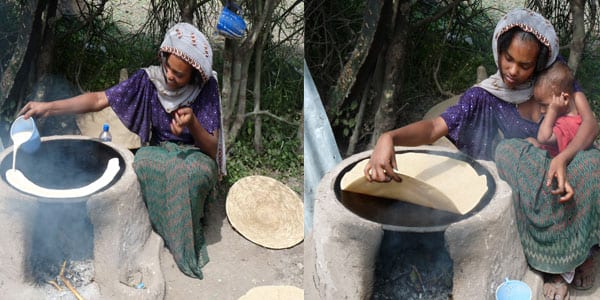
The first thing that strikes you when landing at an airport in Ethiopia is the smell of coffee, a drink that has a lot of quality here. It is a ritual and whose plant, the coffee tree, is native to the Ethiopian province of Kaffa. There it grows wild.
The second thing that is surprising is seeing in the field harvesting by hand. More than 90% of the population lives in rural areas dedicated to agriculture. Only 20% of the total arable land is exploited. The land is suitable, in addition to coffee, for cereals, legumes, fruits, sugar cane, tea and spices.
All these foods, along with the necessary objects for the coffee ceremony, among them the pans with holes to toast it. They can be seen in the markets of any city, such as Mekele, the gateway to the Danakil. The lowest place on Earth, 150 meters below sea level. They say the most inhospitable place.
A three-hour night climb at the camel's pace, which is not little, up a mountain of lava will lead to the crater of the Erta Ale volcano. One of the few in Africa that maintains its activity intact.
The reddish smoke that gives off and that serves as a beacon to the walker precedes the spectacle that will be seen on the edge of the crater. Flames of fire that form a real hell on earth. And a few meters from this reddish explosion is where the visitor will sleep, on top of the volcano, under a starry sky
Dallol
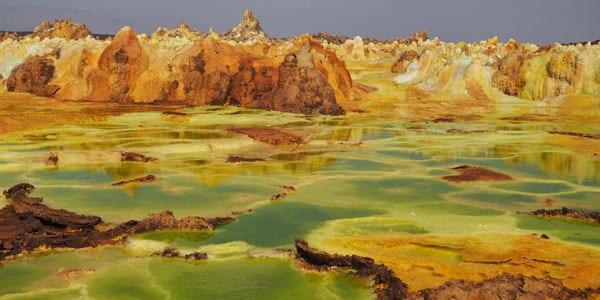
In addition to hell, the Danakil allows you to enter the bowels of the earth, the Dallol. A unique place of nature in the world with salt formations that look like models of mountains and sulfurous springs of yellow and green tones depending on the sunlight.
El Dallol a show that is seen as is, without any human intervention.
To get here you cross the immense Lake Assale. All of it covered in salt that looks like snow and from where the Afar extract this material to divide it into pieces. Then they transport it aboard camels.
After having been in hell it is not bad to stop by a church, and if it is one of the most peculiar monolithic rock-carved Christian temples in the world, all the better. Declared a World Heritage Site by Unesco in 1978. It is the so-called “African Jerusalem”. It is made up of 11 monolithic churches oriented towards that city.
Lalibela
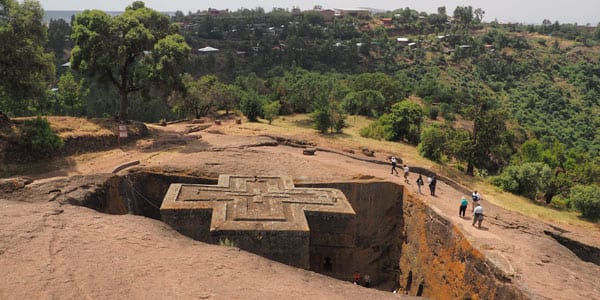
The King of Lalibela, considered a saint by the Orthodox Church, had these churches built in the XNUMXth century. The reason to minimize the suffering of the pilgrims and that, in this way, they did not have to go to Jerusalem.
The construction took 24 years and, according to the legend, the angels continued the daytime work of the men at night.
The Bete Medahne Alem Church, with a capacity for 500 people and which has never stopped celebrating Mass, is the largest monolithic temple in the world. The Bete Giorgis Church, which symbolizes Noah's Ark, was built in honor of Saint George, the patron saint of Ethiopia. It is a symbol of Lalibela.
After visiting the churches, it is highly recommended to eat while enjoying the views of the city in the original Ben Abeba restaurant, whose structure symbolizes a bottle and two glasses, owned by a Scottish woman and an Ethiopian woman who offer western and typical food based on the in the injection with different sauces and stewed meat.
A good hotel to sleep in Lalibela, also with good views, is the Cliff Edge Hotel.
As in any other city in the country you can see walking down the street how in the houses, no matter how small, there is a place dedicated to the coffee ceremony. What includes a white cabinet with cups, a fire to toast it and a container in which to serve it.
A long ritual, attended by family and friends, in which no less than three cups each are drunk and which is usually performed twice a day.
Coffee harvest time
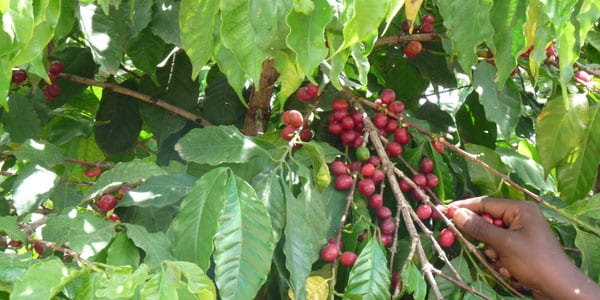
In Ethiopia the coffee plant continues to grow wild in some places, such as around the twenty monasteries of Lake Tana, in Bahar Dar. The largest lake in the country and that can be seen while eating at the Lake Shore Restaurant.
In the middle of lush vegetation on the way to the church of Ura Kidane Mehret, coffee trees that are about 150 years old grow. One of the owners tells us that each family has about one hectare of land here. From it he gets between 24 and 100 kilos of coffee beans.
The coffee bark is used to make an infusion (ashera).
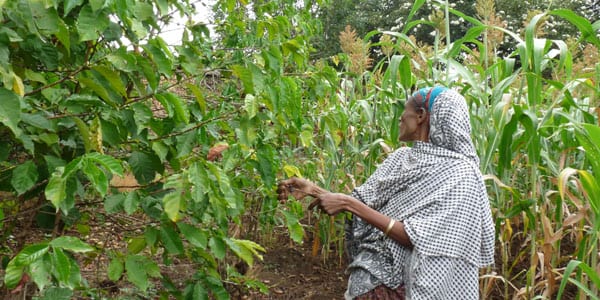
In the east of the country, in the walled city of Harar. There are some of the best coffee plants in the country and in the world, of the Arabica variety. It is found not only in large plantations, but also in what are called here coffee gardens. This is where the fruit grows in the vicinity of farmers' homes.
Strolling through narrow streets and among the 99 mosques of Harar - it is the fourth holy city of Islam after Mecca, Medina and Jerusalem. It is surprising to see coffee trees that grow in the citrus orchards of the houses for their own consumption. 15 kilometers from Harar, in Sofi, we meet Bedria Mohamed, in his 50s. It has 200 coffee trees that have been here for five generations.
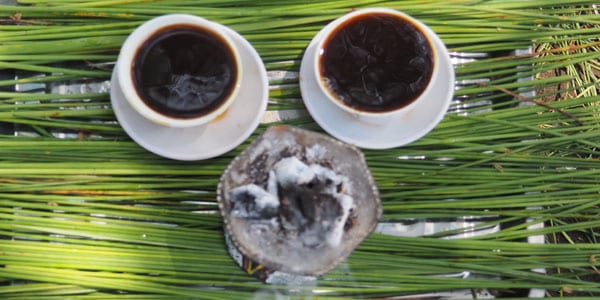
In a good season, she, her family and neighbors collect - by hand, with a bamboo basket - up to 200 kilos of grains. After drying them on the roof for a month, he will sell in the city market.
He does not know exactly his age, but he does recognize Harar's coffee from others by the smell.
For her, coffee is a fundamental part of her life: “When I drink it, I wake up, I have a social life with it because I invite people and money to sell it,” she tells us.
Coffee needs a lot of water so he is thinking of buying a water pump to plant more.
Chat sale in the market
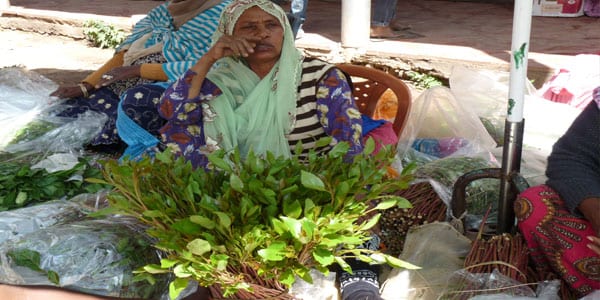
In Harar and neighboring Dire Dawa, coffee plants are increasingly being replaced by chat. A leafy shrub very similar to tea. It is qualified as a drug by the WHO for the presence of psychotropic alkaloids, and legal in Ethiopia.
While the price of coffee falls, that of chat, a very profitable crop, is rising and increasing its sale to neighboring countries. They arrive to transport it by plane, since it must be consumed fresh-, rivaling the exports of coffee.
The Ethiopians, as you can see from every corner and house in Harar. They chew it, generally in the afternoon, for its psychotropic effects, which first causes euphoria and excitement, and then fatigue, as well as addiction.
By the teeth, or the lack of them, you can recognize people who have been chewing them for years.
As in the case of coffee, they also organize a ceremony to chew chat, which they do together with peanuts, to reduce the acidity of the plant. When they finish they drink milk to, they say, lessen its effects.
Chat was chewed at first only by magnets to enter a trance, but later its consumption spread, mainly among Muslims, although Christians also take it.
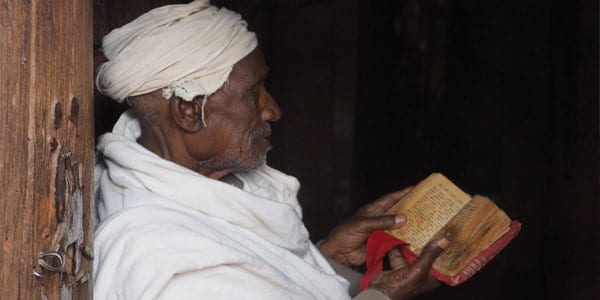
Harar is an example of coexistence between both religions, which have their respective temples very close to each other.
In the central square, where the Orthodox church of Mehane Alem is located, you can also taste a good coffee or “macchiato”. at the bar known as Testi by the name of its owner.
In the center of town is the Nure Roasted Harar Coffee roaster. You can buy coffee beans from the area. A good restaurant for traditional food is Hiruz.
To sleep in Harar, a good option is the traditional guest houses Zubeyda, Rewda and Anisa. They can be booked through Nahom Amde (nahomnaha@gmail.com), a good local guide to get to know the city.
Gondar
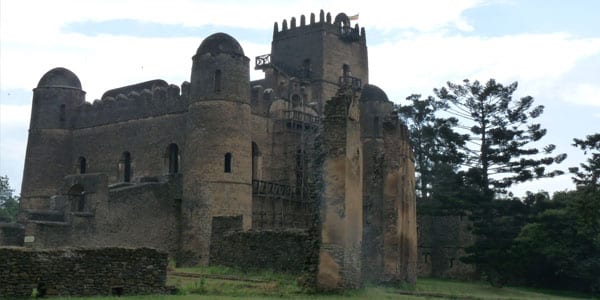
Another of the cities of Ethiopia declared a World Heritage Site by Unesco is Gondar.
Known as the "Camelot of Africa" for its set of medieval European-style castles, which are accompanied by a large rectangular pool of 2.800 square meters that is used for the feast of the Epiphany (Timket). Between January 18 and 20, it is filled with the waters of the surrounding rivers.
Gondar is also home to, within a 20 minute tuc-tuc ride, a brewery that you can visit, the Dashen Brewery, and drink from the taps located outside.
A good traditional food place in Gondar is the Four sisters restaurant. It is run by four sisters who as soon as they serve the dishes as they dance with the diners.






